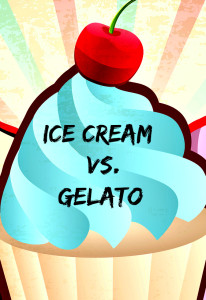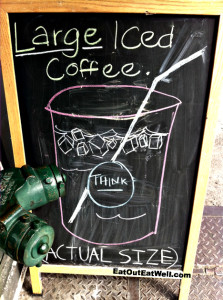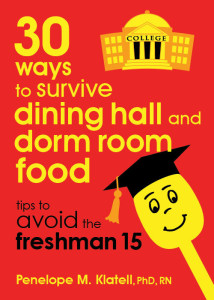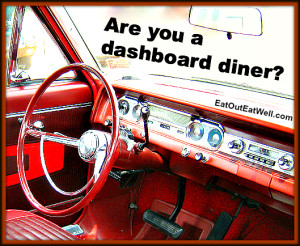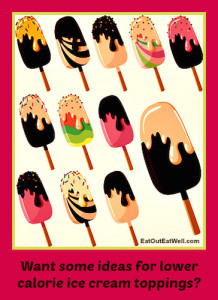 You can put just about anything on ice cream, but the standard fare — toppings like hot fudge, whipped cream, peanuts, walnuts in syrup, crushed heath bar, caramel sauce – can add hundreds of calories and not much nutrition to your sundae or cone.
You can put just about anything on ice cream, but the standard fare — toppings like hot fudge, whipped cream, peanuts, walnuts in syrup, crushed heath bar, caramel sauce – can add hundreds of calories and not much nutrition to your sundae or cone.
Some common ice cream toppings:
- Smucker’s Spoonable Hot Fudge Topping, 2 tablespoons: 140 calories, 4g fat, 24g carbs, 2g protein
- Smucker’s Spoonable Pecans in Syrup Topping, 1 tablespoon: 170 calories, 10g fat, 20g carbs, 1g protein
- Regular Redi Whip, 2 tablespoons: 20 calories, 2g fat, 1g carbs
- Fat Free Redi Whip. 2 tablespoons, 5 calories, 0g fat, 1g carbs
- Cool Whip, extra creamy, 2 tablespoons: 32 calories
- Cool whip, light, 2 tbsp,16 calories
- Cool Whip, fat-free: 2 tbsp, 15 calories, 43.5g carbs, 0 protein
- Regular M&M’s, 10 pieces: 103 calories, 5.2g fat, 12.1g carbs, 1.9g protein
- Peanut M&M’s, about 16 pieces: 200 calories, 10.15g fat, 23.48g carbs, 3.72g protein
- Peanuts, one ounce: 160 calories, 14g fat, 5g carbs, 7g protein
- Rainbow Sprinkles (Mr. Sprinkles), 1 teaspoon: 20 calories, 0.5g fat, 3g carbs, 0g protein
- Chocolate Sprinkles (jimmies), 1 tablespoon: 35 calories, 0g fat, 6g carbs, 0g protein
- Smucker’s Spoonable Light Hot Fudge Topping, Fat Free, 2 tablespoons: 90 calories, 23g carbs, 2g protein
- 10 mini marshmallows: 22 calories, 0 fat, 5.7g carbs, .1g protein
- 18 gummi bears: 140 calories, 0 fat, 43.5g carbs, 0 protein
Think Outside The Box For Lower Calorie, but Still Delicious, Toppings
The world is your oyster in terms of toppings, so why not think about fruit, cereal, or a crushed up 100-calorie pack of anything? Here are some suggestions:
- Smucker’s Spoonable Pineapple Topping, 2 tablespoons: 100 calories, 0g fat
- 1 mini box of raisins (0.5 ounces): 42 calories, 0.1g fat, 11.1g carbs, 0.4g protein
- One medium banana: 105 calories, 0 fat, 27g carbs, 1g protein
- One cup strawberry halves: 49 calories, 0.5g fat, 11.7g carbs, 1g protein
- Sugar-free Jello pudding: 60 calories
- One cup Froot Loops: 118 calories, 0.6g fat, 26.7g carbs, 1.4g protein
- One cup blueberries: 83 calories, 0.5g fat, 21g carbs, 1.1g protein
- Crushed pretzel sticks, 1 ounce: 110 calories, 1g fat, 23g carbs, 3g protein

Summer 2014
Is there a road trip in your future?
The Summer issue of Eat Out Eat Well Magazine is ready to help you eat well when you’re in the car or eating at rest stops or roadside diners.
Get it now from iTunes for $1.99 an issue or $4.99 for a yearly subscription (four seasonal issues). Soon to be available for android, too.
